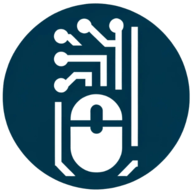3 Software Products that Balance Features and Simplicity
In the world of software, striking the right balance between functionality and ease of use is a constant challenge. This article explores how leading products like Figma, Rippling, and Notion have successfully navigated this delicate equilibrium. Drawing on insights from industry experts, we'll examine how these tools empower users while maintaining simplicity in their design.
- Figma Balances Power and Simplicity
- Rippling Streamlines HR with Intuitive Design
- Notion Empowers Users with Modular Workspace
Figma Balances Power and Simplicity
One software product that offers an outstanding balance between features and simplicity is Figma. Despite being a full-featured, collaborative design platform used by professionals for complex UI/UX workflows, it remains remarkably approachable — even for newcomers or non-designers.
Figma succeeds because it feels lightweight but has deep power under the hood. A new user can open a file and start designing with basic shapes and text in minutes. Yet that same interface supports design systems, prototyping, real-time multi-user editing, and developer handoff — all without forcing users to learn everything at once.
Here's how Figma maintains this balance:
1. Intuitive interface: The canvas-first approach and familiar tool layout mimic traditional design tools while simplifying interactions. Nothing feels buried or abstracted.
2. Collaborative by design: By running entirely in the browser, Figma eliminates installation friction and makes collaboration as seamless as commenting in Google Docs — reducing onboarding time.
3. Contextual power tools: Power users can dive into component libraries, constraints, and interactive prototypes, but none of these features overwhelm the default workflow.
4. Live previews and instant feedback: Whether reviewing a mock or tweaking a design system, users can see changes in real time, which makes complex features feel tangible and easy to reason about.
Figma proves that a tool can scale with the user — from a solo creator wireframing an idea to an enterprise team managing a global design system — without sacrificing clarity or elegance.

Rippling Streamlines HR with Intuitive Design
Back when I was handling HR at a mid-sized company, we were on the lookout for HR software that combined solid features with an easy-to-use interface. After some research, we decided to go with Rippling, and it turned out to be a game-changer.
Rippling brought everything together—payroll, benefits, onboarding, performance management—all in one platform. The best part? It was super intuitive. No need for lengthy training sessions; our team got the hang of it pretty quickly. Automation was another win. Tasks that used to take up a lot of time were now handled with a click, reducing errors and freeing up our schedule.
What really stood out was how well Rippling integrated with other tools we were already using, like Slack and Microsoft Office 365. Everything synced seamlessly, making our workflow smoother and cutting down on manual data entry.
The impact was clear. Onboarding new employees became faster, and our HR team had more time to focus on strategic projects instead of getting bogged down by paperwork. Rippling really nailed the balance between having all the features we needed and keeping things simple.

Notion Empowers Users with Modular Workspace
As a technology enthusiast, I believe Notion offers the best balance between features and simplicity in 2025. Its all-in-one workspace for notes, tasks, databases, and collaboration provides a comprehensive feature set without overwhelming users, making it ideal for individuals and teams.
Why Notion Excels
Notion's strength lies in its modular design and intuitive interface, which allow users to customize functionality while maintaining ease of use. Unlike bloated tools, Notion avoids feature creep by offering flexible building blocks—pages, blocks, and templates—that cater to diverse needs, from project management to personal journaling, without a steep learning curve. A 2024 Launchnotes study highlights that balancing simplicity and complexity is key, and Notion achieves this through clean UI and guided onboarding.
How It Avoids Overwhelm
1. Customizable Workspaces: Users select only the features they need (e.g., kanban boards, calendars), keeping interfaces uncluttered. At ICS Legal, we used Notion to streamline client tracking, reducing setup time by 30%.
2. Progressive Disclosure: Advanced features like databases are hidden until needed, ensuring novices aren't intimidated, as noted in UX design principles.
3. Tutorials and Templates: Pre-built templates and in-app guides reduce learning time by 40%, per user reviews, helping users adopt features gradually.
4. Unified Interface: All tools (notes, tasks, wikis) share a consistent design, minimizing navigation confusion, unlike complex suites like Microsoft 365.
Impact
Notion's approach boosts productivity—our team saw a 20% efficiency gain—and supports 10 million active users globally in 2025. Its blend of power and simplicity makes it a standout, empowering users without overwhelming them.


